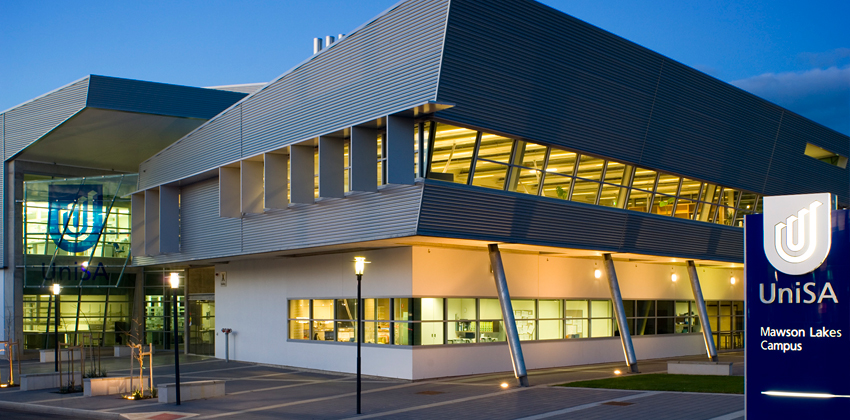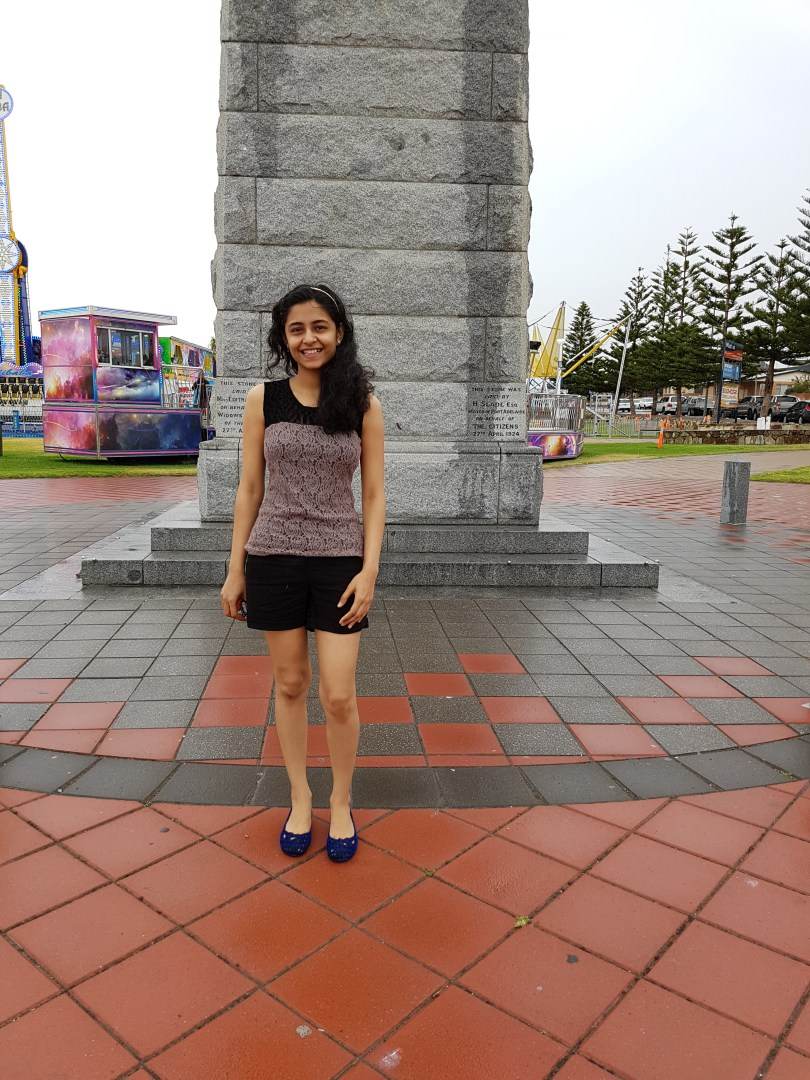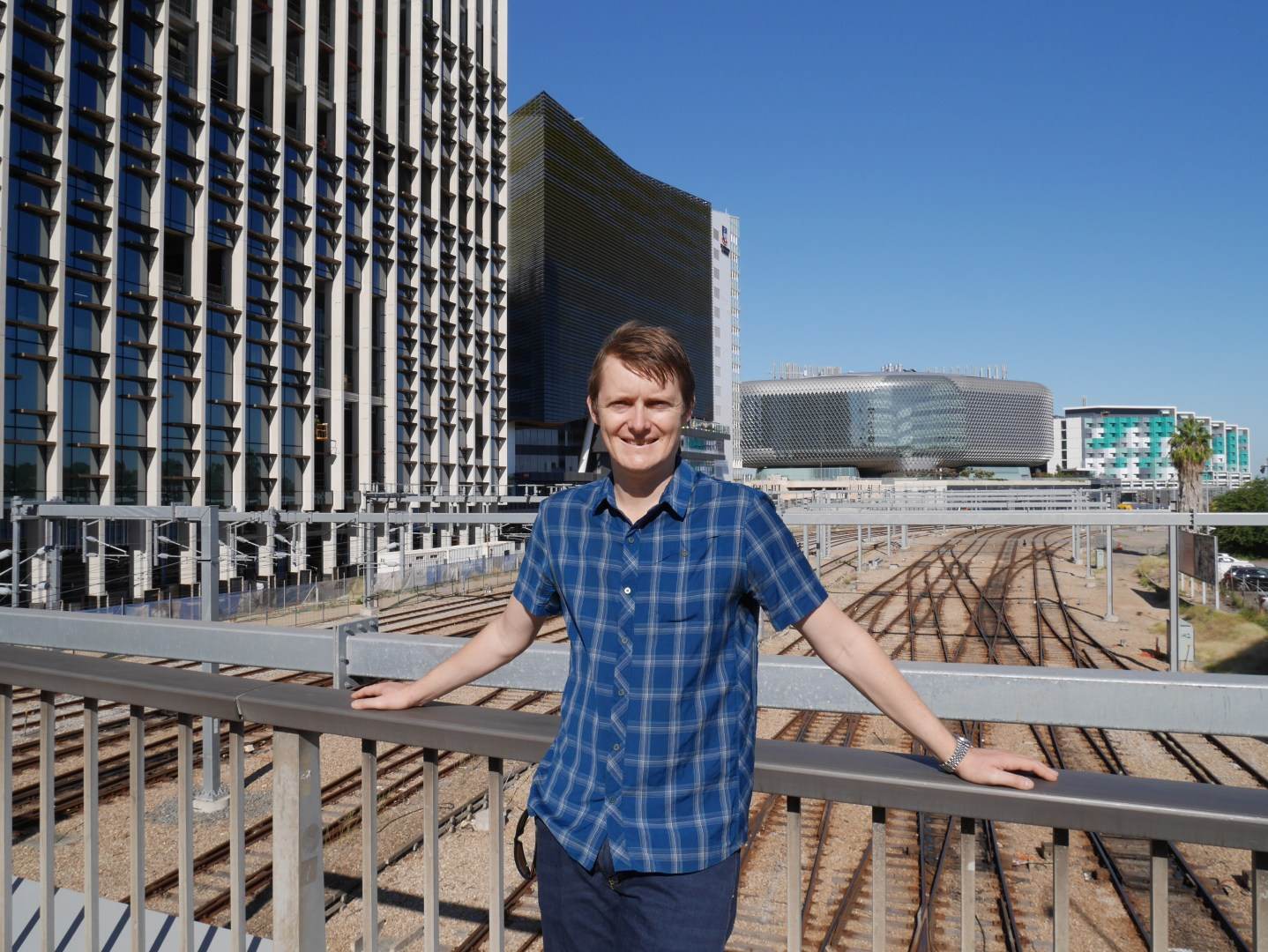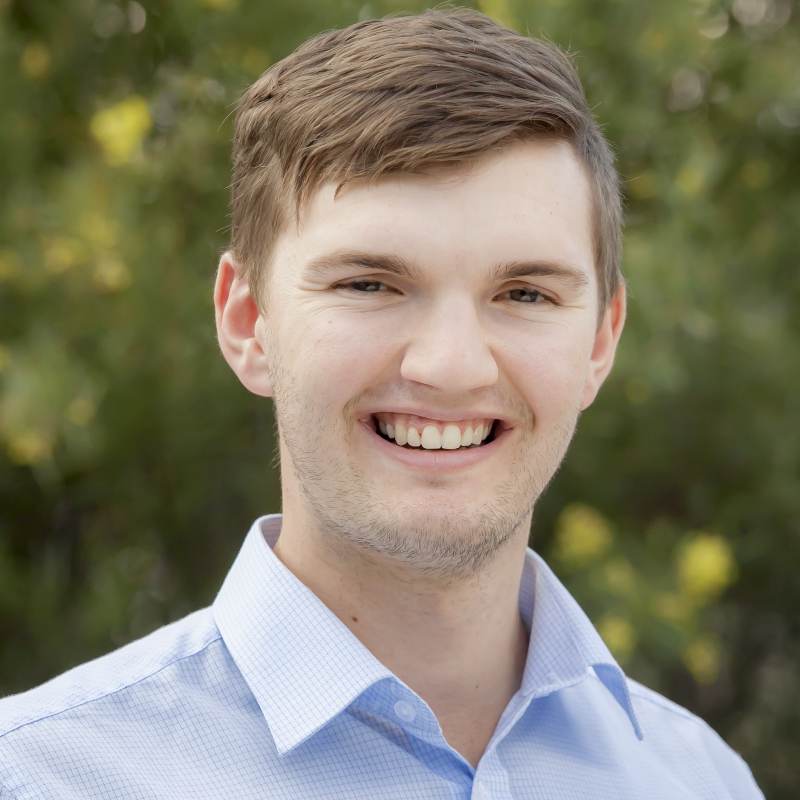At UniSA, we support our engineering, construction and project management students with a comprehensive array of facilities.
This unique learning environment offers students a significant advantage in the development of their knowledge and skills through an interactive and applied learning model.
UniSA is the only university in South Australia offering large scale thermo fluids and aerodynamic laboratories, and robotic and automation laboratories. As a part of their program, our students have the opportunity to develop real-world projects, translating the theoretical concepts into actual outcomes.
Take a look through our engineering, construction and project management facilities.
Teaching and research laboratories
-
Engineering laboratories
Automotive Laboratory
- Solar car
- Electric commuter car
- Formula SAE car
Robotic and Automation Laboratory
- ABB1400 robots
- ABB 140 robot
- Hydraulic Test Bench
Computer Aided Engineering Laboratory
Integrated CAD/CAM Systems
- SolidWorks with SolidCAM
- Unigraphics
- Pro Engineer
FEA
- SolidWorks Simulation
- Ansys
- Strand7
Simulation
- ABB Robot Studio
- Automod
- Design for Manufacture and Assembly (DFMA)
- Invention Machines Lab
- Matlab
- Moldflow
Life-Cycle
- GaBi Education
Thermo Fluids and Aero Dynamics Laboratories
- Cooling towers
- Wind tunnels and air flow measurement rigs
- Environmental test chamber
- Heat transfer and heat exchanger test rigs
- Balanced calorimeter room for testing thermal systems
- Refrigeration and air conditioning test rigs
- Engine test cells
- Outdoor-solar collector and cell module testing equipment
- Pipe/pump test rigs
- Thermotron
- Liquid desiccant test rig facility
- Thermal Imaging Cameras
Concrete laboratory area
- Five various types of concrete mixers, concrete coring, grinding and cutting equipment
- A large 3m3 material drying oven and space to store around 50 pallets of various concrete related materials is capable of manufacturing and testing most small to medium scale research concrete material projects
- Two 40m2 constant temperature and humidity rooms
- Three modern concrete testing equipment setups
- Structural strong floor and larger universal testing machines
- NATA-accredited for the curing and testing of many concrete products including cylinders, cubes, cores and shot-crete 'round determinant panels'.
Mechanics and Dynamic Laboratories
- Geared System Apparatus
- Norwood Balancing Machine
Manufacturing Laboratory
- NC Bridgeport VMC480PS Vertical milling machine with 4th axis rotator
- NC Taksawa TC-3 lathe
- Makerbot Fused Deposition Modeller
- Heine Mechanical Press (blanking)
- Stacey Hydraulic Press (draw forming, forging)
- Electronic Discharge machine
- Wire Bonding machine
- Instrumented machine tools for teaching and research in various manufacturing processes, eg metal cutting, sheet metal forming, rolling and extrusion
Metrology Laboratory
- Brown and Sharp Coordinate Measuring machine
- Instron machine
- Gauges
- Microscopes
Polymer and Composite Laboratory
- Injection moulding machines
- Extruder
- Proof Daylight Press
- Rotoless (Moving Die) Rheometer machine
- Rubber vulcanizing machine
Nano Laboratory
- DOV vacuum ovens
- Furnace
- Magnetic stirrers
Agricultural Machinery Laboratories
- Tillage test track
- Seed placement test rig and growth chambers
- Tillage and seeding field test equipment (truck with crane, tractors and seeders)
- Food and fibre processing facility
- Mechanical workshop
Experience AME Laboratory
- Student workbenches
- Hand tools
- Display of mechanical items
Structural Engineering Laboratories
This facility consists of two laboratories that include:
- A 33m x 17m reaction-loading floor with a 10 tonne gantry crane
- High capacity load reactionary frames with a maximum height of 7m and spans up to 10m
- MTS cyclic loading system with a range of hydraulic actuators from 100kN to 1000 kN
- Manual hydraulic loading actuators ranging from 2kN to 1000kN
- Dynamic and static computer controlled data acquisition for load, strain and deflection
- Masonry wall racking loading systems for earthquake simulation
- Masonry wall testing system for simulating foundation movement due to reactive soils
- Universal testing machines in the range of 2kN to 3600kN
- Extensive workshop to support the special needs of structures testing
- A large range of frames and assemblies for reaction loading
- Simulated wind load panel testing system
- Ridge and knee joint testing apparatus
- A range of force, deflection and strain measurement systems
- Cyclonic impact test rig
- NATA accredited for testing Access Covers and Grates AS 3996.
-
Sir Charles Todd - Building SCT
Final Year Project Laboratory
Courses: Electrical and Information Engineering Project 1, Electrical and Information Engineering Project 2, Electrical and Information Engineering Honours Project 2
- Range of test and measurement equipment as required for a project based work environment
- Soldering stations
Communication Laboratory (SCT 1-02)
Courses: Introduction to Computer Systems
- Analog and digital communication system equipment
Digital Electronics Laboratory (SCT 1-10)
Courses: Introduction to Computer Systems, Digital Devices and Systems, Dynamics of Electrical Machines, Electricity and Electronics, Data communications and networks, Embedded System Design
- Computers with specialist software
- FPGA boards
- Microcontrollers
- Bench power supplies
- Multimeters
General Electronics Laboratory (SCT1-15)
Courses: Electrical and Energy Systems, Introduction to Computer Systems, Microcontroller Programming and Interface, Electricity and Electronics, Electronic Devices and Circuits
- Digital Oscilloscopes,
- Power supplies,
- Digital multimeters,
- Audio generators,
- Millivolt meter
- Soldering stations
General Electrical Laboratory (SCT1-26)
Courses: Signals and Systems, Electrical Machines 1, Power System Analysis, Power Electronics and Drives
- AC and DC machines
- Three Phase Induction machines
- Induction generators
- Transformers
- Autotransformers
- Synchronous machines
General Electrical Laboratory (SCT1-28)
Courses: Electrical Machines 1, Power Electronics and Drives, Power System Analysis
- AC and DC machines
- Three Phase Induction machines
- Induction generators
- Transformers
- Autotransformers
- Synchronous machines, operation of
- Range of bench power supplies (two and three phase)
Mechatronics Laboratory (SCT1-28)
Courses: Vibration Control and Acoustics, Autonomous Mechatronics Systems, Mechatronics System Integration
- The Mechatronics Laboratory is a multipurpose laboratory able to supply power, data and pneumatics services at either of the seven PODs (workstations) or in a central area.
- Each workstation has designed to accommodate four students in a highly flexible audio visual environment allowing each of the computer based with 40” monitors to project their work on any other PD or instructors screen
- FESTO mechatronic system
- FESTO Robotino
- Fabrication room including 3D printer for rapid prototyping
Real Time Computing Laboratory (SCT1-40)
Courses: Computer hardware, Signals and Systems, Real Time Systems and Control, Electricity and Electronics, Operation Control Mod Power Systems, Electromechanics, Power Systems Analysis, Mechatronics Systems Integration, Advanced Internet Technology, Digital Signal Processing, System Design Technology
- Computing Pool with specialist software
- Range of purpose built Real Time Systems and Control laboratory equipment
- Range of bench power supplies (two and three phase)
-
F Building Laboratories
Physics laboratory A (F1-43)
Courses: Intro to Engineering Physics, Aviation Physics 1, Applied Physics 2,Applied Physics 1N Computational Science 1, Applied Science Project, Earth and Space
- Gravitational free fall; measurement of the acceleration caused by gravity
- Heat; transfer of energy (heat) from one body to another by thermal interactions and is important knowledge in the understanding of heat engines (e.g. combustion engine)
- Sound; wave properties and characteristics investigation
- Optics
Physics laboratory B (F1-41)
Courses: Intro to Engineering Physics, Applied Physics 1, Applied Physics 2, Aviation Physics 1N, Physics for Medical Radiation 1, Applied Science Project, Earth and Space
- Electric circuits introduction
- Cathode Ray Oscilloscope introduction; an important electronic test instrument that allows observation of constantly varying signal voltages (AC)
- Laboratory instrument introduction
- AC experiments
- Hall effect; Hall effect probes are used as a sensing device e.g. magnetometers, rotating speed sensors, speedometers, current sensors fluid flow sensors
Physics laboratory C (F1-37)
Courses: Engineering Physics, SABIT Mechanics and Physics, Applied Physics 1
- Conservation of momentum; air table equipment and digital imaging and analysis techniques
- Determination of an electrons charge and mass ration ( e/m)
- Speed of sound experiment
- Data acquisition using TAIN DAQs
- Interferometry experiment; an investigative technique to extract information about waves usually electromagnetic e.g. light, that is important in investigative techniques in the fields of astronomy, fibre techniques, engineering metrology, bio-molecular interactions, mechanical stress/strain measurement and velocimetry
- Planck’s constant; an important constant related to the quantisation of light and matter
- Electron diffraction; investigation of the wave nature of electrons (wave-particle duality)
Physics Laboratory D (F2-41)
Courses: SABIT Mechanics and Physics, Practical 1, Engineering Physics
- Cathode Ray Oscilloscope; Operation of the CRO and investigation of AC measurements
- Lasers; Optical measurements using laser equipment
- Photoelasticity; experiments to determine stress distribution in a material
- Optics; thin lens experiments
- Optical interferometry; Michelson Interferometer. An investigative technique to extract information about waves usually electromagnetic e.g. light, that is important in investigative techniques in the fields of astronomy, fibre techniques, engineering metrology, bio-molecular interactions, mechanical stress/strain measurement and velocimetry
Computational Physics Laboratory Pool (F1-48)
Courses: Intro to Engineering Physics, Aviation Physics 1, Applied Physics 2, Materials for the future, Optical Communications G, Computational Science 1, Applied Science Project
- MATHCAD; Industry standard software for engineering calculations
- KaleidaGraph; scientific graphing and data analysis software
- LabVIEW; Visual programming language and environment. Customise PC’s to measure and automate collecting data from the physical world
- MATLAB; High level technical computing language and interactive environment for algorithm development, data visualisation, data analysis and numerical computation
- Online Physics Simulation software
Nuclear Physics laboratory (F2-56)
Courses: Physics of Materials and Technology, Computational Science 1, Lasers and Optics
- Wide range of scientific instruments; Data Acquisition Units, Microcontrollers
- Student Project Laboratory
Physics Instrumentation Laboratory (F2-04)
Courses: Physics of Materials and Technology, Computational Science 1, Lasers and Optics
- Wide range of scientific instruments; Data Acquisition Units, Microcontrollers
- Student Project Laboratory
Physics Optical laboratory (Annex)
- Lasers and optics (advanced)
Physics Renewable Energy laboratory (Annex)
- Renewably Energy equipment; Solar panels investigations, properties and performance
Physics Optical Communications Laboratory (F2-07)
Courses: Physics of Materials and Technology
- Optical Fibre Equipment
- Power output characteristics of laser diodes and LED
- Transmission characteristics through a plastic optical fibre
- Transmission and joint losses through a plastic optical fibre
- Optical fibre basics and calculation of mode number
- Spectral line width of laser diodes and LED
- Optical time domain reflectometer
- HeNe Laser
IT Physics Laboratory (F2-08,09)
Courses: Physics of Materials and Technology, Computational Science 1, Optical Communications
- 3/1/2 Power Law and thermionic emission
- Schottky effect
- Energy gap of a semiconductor
- Conductivity and Resistivity of Ge and Si material
- Electron diffraction (advanced)
- Hall effect (advanced)
- Variation of resistivity of materials with temperature.
- Spectral response of a photocell
- Microwave propagation and polarisation
- Farady law and skin effect
- Characteristics of a gun diode
- Klystron tube and interaction of microwaves with a plasma
- Spectral response of a photo diode and photo resistor
- Solar cells
- HeNe laser and optics
- Determination of Planck’s constant
-
Geomechanics and Pavement Laboratories
This facility consists of four main temperature controlled laboratories along with environmental chambers and soil and aggregates preparation areas. Our testing capabilities include:
Standard Pavement/Geotechnical tests
- compaction (Standard and Modified)
- CBR
- unconfined compressive strength
- soil classification tests (sieve analysis, hydrometer, Atterberg limits)
- particle density
- field compaction density (sand cone device)
- permeability (constant and falling head)
- oedometers with computerised data loggers for collapse and consolidation tests
- standard computer controlled triaxial testing systems
- expansive soil characterisation including swell tests, core shrinkage test, dew point psychrometers, electrical conductivity tests for solute suction and filter paper tests for total and matric suction
- neutron moisture density gauge.
Advanced pavement/Geotechnical tests
- computer controlled triaxial system for stress and strain path controlled testing with bender elements fitted to determine small strain stiffness and Poisson’s ratio for soils
- computer controlled resilient modulus testing facility (triaxial) for bound and unbound materials with on-sample axial and radial strain measurement
- Computer controlled triaxial system for suction controlled stress and strain path testing
- bubbling columns and axis translation technique for SWCC determination
- high suction tensiometer with high accuracy balance for SWCC determination and suction measurement
- computer controlled micro-step shear box system
- computer controlled simple shear testing apparatus
- pull out testing apparatus for geo-reinforcements
- large scale laboratory tests of pavement and other geomaterials under static or repeat loading condition.
-
Digital learning
Experiential Learning Studio
This studio is a new type of experiential learning environment containing the latest audio visual equipment. The Studio can provide students with the opportunity to engage in hands-on learning as demonstrated on the large wireless touch panel located at the front of the room. This room is broken up into various sections:
- a teaching station (located at the front of the classroom)
- seven pod stations located around the classroom. Each pod allows students to display content from their pod laptop connection or pod desktop PC onto the pod AV screen.
The touch panel at the front of the room will allow the teacher to:
- display content from their laptop or desktop PC (which is located in the AV rack)
- display and control content from a DVD/VCR combo player (which is located in the AV rack)
- switch content from teaching station to multiple pods or a single pod to the projector or other pods.
Digital Learning Laboratory
The goal of Project LIVE (Learning through Immersive Virtual Environments) is to transform traditional classroom activities into flexible, interactive and engaging experiential learning exercises using immersive digital visualisations. This is achieved using two innovative lab spaces: the panorama room and visualisation studio. The first is equipped with a multi-projector facility that enables the simultaneous display of 270-degree panoramic images and videos for the purpose of information integration and collaborative learning. The second is a VR-enabled computer studio equipped with both Oculus Rift and HTC Vive virtual reality headsets and touch controllers. These learning spaces are available for interactive workshops, showcases, student visits and tours, and have recently been recognised by an Australian Award for University Teaching for Outstanding Contributions to Student Learning.
Find out more about our programs
Mawson Lakes campus
Co-located with engineering and tech companies in Technology Park, Mawson Lakes campus has industry-standard teaching and research facilities everywhere. The campus hosts many internationally-recognised research institutes and centres.






